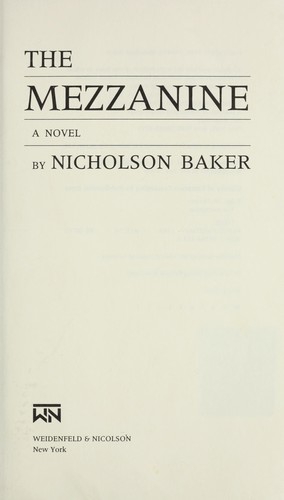Dr. Goat quoted The mezzanine by Nicholson Baker
Staplers have followed, lagging by about ten years, the broad stylistic changes we have witnessed in train locomotives and phonograph tonearms, both of which they resemble. The oldest staplers are cast-ironic and upright, like coal-fired locomotives and Edison wax-cylinder players. Then, in mid-century, as locomotive manufacturers discovered the word “streamlined,” and as tonearm designers housed the stylus in aerodynamic ribbed plastic hoods that looked like trains curving around a mountain, the people at Swingline and Bates tagged along, instinctively sensing that staplers were like locomotives in that the two prongs of the staple make contact with a pair of metal hollows, which, like the paired rails under the wheels of the train, forces them to follow a preset path, and that they were like phonograph tonearms in that both machines, roughly the same size, make sharp points of contact with their respective media of informational storage. (In the case of the tonearm, the stylus retrieves the information, while in the case of the stapler, the staple binds it together as a unit—the order, the shipping paper, the invoice: boom, stapled, a unit; the letter of complaint, the copies of canceled checks and receipts, the letter of apologetic response: boom, stapled, a unit; a sequence of memos and telexes holding the history of some interdepartmental controversy: boom, stapled, one controversy. In old stapled problems, you can see the TB vaccine marks in the upper left corner where staples have been removed and replaced, removed and replaced, as the problem—even the staple holes of the problem—was copied and sent on to other departments for further action, copying, and stapling.) And then the great era of squareness set in: BART was the ideal for trains, while AR and Bang & Olufsen turntables became angular—no more cream-colored bulbs of plastic! The people at Bates and Swingline again were drawn along, ridding their devices of all softening curvatures and offering black rather than the interestingly textured tan. And now, of course, the high-speed trains of France and Japan have reverted to aerodynamic profiles reminiscent of Popular Science cities-of-the-future covers of the fifties; and soon the stapler will incorporate a toned-down pompadour swoop as well. Sadly, the tonearm’s stylistic progress has slowed, because all the buyers who would appreciate an up-to-date Soviet Realism in the design are buying CD players: its inspirational era is over.

